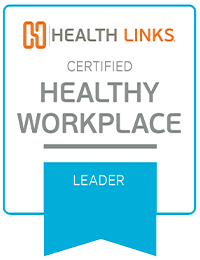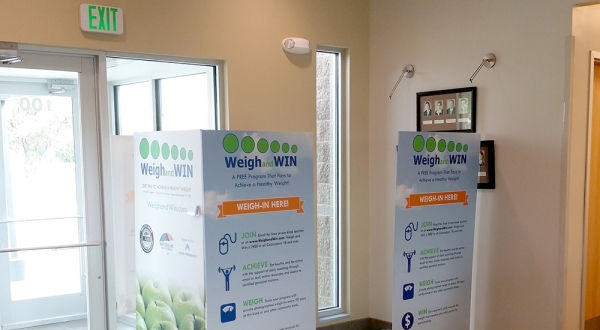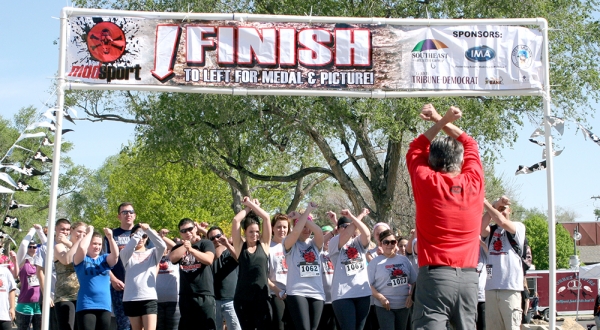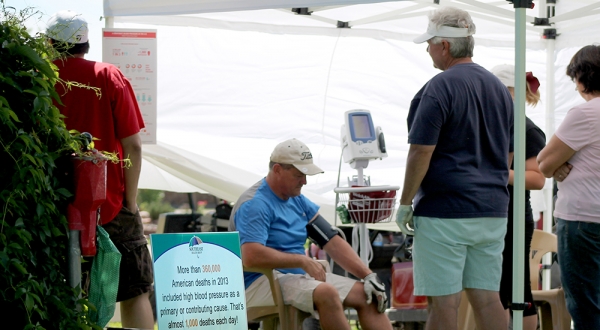
Health Links (HL): Why is the health and wellness of your employees important to you?
Southeast Health Group (SHG): As care providers we cannot expect the individuals we serve to lead a healthy lifestyle if we do not lead by example. Most American adults spend more waking hours at work than any other place, by creating a worksite that supports and encourages a healthy lifestyle we greatly improve the likelihood that people will make a positive change in their own home lives as well.
HL: What does your workplace wellness program look like?
SHG: We are constantly expanding our wellness program. We recently hired a Wellness Manager and Health Coach to further our efforts. Currently, we offer biannual cholesterol screenings, subsidized gym memberships, and healthy food choices at meetings to encourage exercise and proper nutrition. We have recently placed a Weigh and Win kiosk in every one of the six counties we serve. Weigh and Win enables community members including our employees to weigh themselves quarterly and win money for weight loss. The program also provides daily coaching, motivation, and nutritional guidance via text or email. Our largest wellness effort to date is the construction of a Wellness Center which will include cardio and strength equipment and a hydrotherapy pool. This addition will enable us to offer exercise classes and much more to our clients, employees, and community members.
HL: How will you/do you know your program is successful?
SHG: To determine success of our program we will utilize employee satisfaction surveys, employee attendance numbers, and the tracking of Wellness Center usage. We will know our program is successful when there is evidence of a reduction in absenteeism and an improvement in employee morale and participation.
HL: What obstacles did you have to overcome to get your program started? How did you overcome them?
SHG: With any new program it takes time to implement components of the program and for leaders and participants to adapt. To overcome this challenge we will provide resources, information, and support to increase participation. We have also employed the “baby steps” approach in making policy changes. In order to avoid an adverse reaction, we are beginning with voluntary participation instead of widespread mandatory initiatives.
HL: Do you incorporate safety along with your wellness program? If so, what does this look like?
SHG: Until recently we had a very wellness oriented safety team as the name for the team was Safety and Wellness, this has now changed, as a separate Wellness Team had been formed. Since its beginning in 2005 the agency’s safety team incorporated wellness directly into the safety conversation. There is a wellness report at every quarterly meeting focusing on various wellness initiatives and efforts that have been made over the last quarter. The safety team has assisted in the implementation of four biggest loser competitions focused on employee weight loss. The safety team has helped in the planning and implementation of flu and TB vaccinations. The agency also offers a BBP training for required staff to help ensure the wellness and safety of all staff and clients when it comes to blood borne pathogens. For the past ten years the safety team has encouraged the philosophy that staff who are healthy in all areas of life are less likely to have an accident, miss work, or become ill.
HL: What tip/advice would you give to a business that is considering starting a workplace wellness program?
SHG: First and foremost it is critical that upper management is in support of your efforts (research based data is a great tool to help achieve this). When approaching management have a budget in mind and tailor your pitch accordingly. You will be surprised how much you can do with a small budget when it comes to wellness. Most importantly, include employees in the development of the program as it should be built around their needs.



